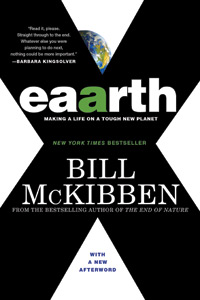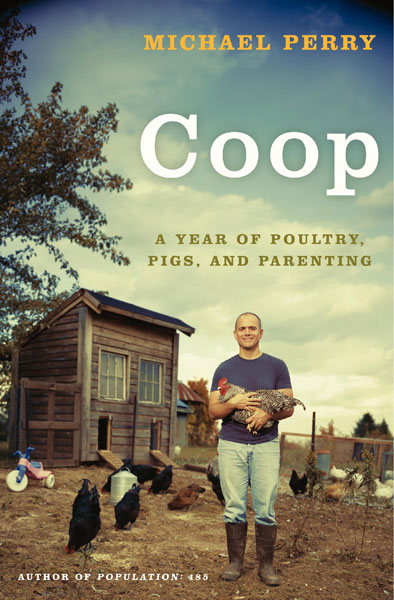http://www.nancycarlssonpaige.org/book-takingbackchildhood1.html
The more I read, the more shocking it is to me how our culture ignores solid research based evidence and instead embraces media and corporate influence.
I realize that the cards are stacked against us. The corporate machine has developed an all-pervasive influence and the unsuspecting parent can feel powerless against it. The research, however, is very clear. Our children need limited (or no) screen time and increase unstructured play time. All of them. Even the big kids and the "good" kids.
Creative play builds creative minds, but the outside influences can stifle it. The only remedy is to consistently enforce an environment where unstructured play occupies the largest proportion of time (except maybe sleep). This can be a huge energy shift, but I think, it maybe harder for parents than children. It will require that parents interact with their kids much more than in a media babysitting model. Quickly, however, the kiddos will learn to play with out you and you will have to play alone.
Keep in mind, as well, that most school programs do not support play. Creative thinking plays a limited role in an environment filled with requirements and testing. Unstructured after school play time is vitally important and provides a much better "reset" after classes are over than the traditional hour of TV before dinner. As we prepare for back-to-school, keep this in mind and I challenge you to go TV free during the school week. I promise you'll notice a positive difference!
Sunday, July 31, 2011
Thursday, July 14, 2011
Did you ever wonder? What the World Eats
http://www.randomhouse.com/book/198143/what-the-world-eats-by-faith-daluisio
Reading statistics about nutrition, poverty and world hunger just can't paint the same picture as photography. Profiling families from around the world, the authors photograph the family in their home, surrounded by a weeks worth of food.
Costs vary from $500 to $1.50 and nutritional value varies as well. Seeing the packages and produce all displayed makes the disparity very obvious. It is amazing how many brands have a global presence.
I am sure that some families adjusted the food displayed, some making it more wholesome than usual, others adding "special" foods for their guests. Even so, the differences are striking.
I would love to see this photographic research replicated with diverse American families. I would hypothesize that families in Arizona, New York, Alaska and Nebraska would demonstrate some telling data about the nutritional crisis in the United States as well.
Reading statistics about nutrition, poverty and world hunger just can't paint the same picture as photography. Profiling families from around the world, the authors photograph the family in their home, surrounded by a weeks worth of food.
Costs vary from $500 to $1.50 and nutritional value varies as well. Seeing the packages and produce all displayed makes the disparity very obvious. It is amazing how many brands have a global presence.
I am sure that some families adjusted the food displayed, some making it more wholesome than usual, others adding "special" foods for their guests. Even so, the differences are striking.
I would love to see this photographic research replicated with diverse American families. I would hypothesize that families in Arizona, New York, Alaska and Nebraska would demonstrate some telling data about the nutritional crisis in the United States as well.
Wednesday, July 13, 2011
Eaarth
http://www.billmckibben.com/eaarth/eaarthbook.html
This is a scary book. It is scary that authors like Bill McKibben have been writing about our environment and suggesting changes in behavior for decades and no significant changes have been made. Even scarier is the premise given here, that environmental change is irreversible, we have passed the point of no return.
Earth is gone, and has been replaced by the less-hospitable Eaarth. Sounds like science-fiction doesn't it? Unfortunately, this assertion is supported by numerous studies and statistics.
Have you seen the record breaking wildfires in the west this summer?
Check this out:
This is a scary book. It is scary that authors like Bill McKibben have been writing about our environment and suggesting changes in behavior for decades and no significant changes have been made. Even scarier is the premise given here, that environmental change is irreversible, we have passed the point of no return.
Earth is gone, and has been replaced by the less-hospitable Eaarth. Sounds like science-fiction doesn't it? Unfortunately, this assertion is supported by numerous studies and statistics.
Have you seen the record breaking wildfires in the west this summer?
Check this out:
How about the record-high temperatures and dry weather?
Here it is:
These are not warnings of potential climate change. They are not possibilities for a future of unknown distance. These are not problems that your grandchildren will face. These changes have already taken place. If we continue on our current path, new and more drastic challenges will loom.
Are you scared yet?
Thursday, July 7, 2011
Big Box Re-Use
http://www.bigboxreuse.com/book/
I think the problems with so called "big box stores" are becoming more and more evident all the time. The recent court decision condoning sexist practices by one of our largest national employers has brought my attention back to the problem. I refuse to shop at that particular store, but avoiding all the big box chains completely is nearly impossible.
Another developing problem is the aging and expansion of these stores. After driving all the smaller vendors from a community and operating out of the initial big-box location for a few years business starts to stagnate. So, what is the logical next step? A "super store". As chains are moving to larger and more sprawling locations they are leaving behind the empty shell of that first "big box".
Julia Christensen noticed that a few communities are reclaiming those boxes in creative and interesting ways. From a town hall, to a skate park, to a school, she profiles the way that the forest of innovation and entrepreneurship is slowly reclaiming the strip-mined main streets of communities all over our country.
With a wiki on her website, Christensen invites us all to recognize our own communities as we re-use and re-claim our own areas from the shadow of the big box.
I think the problems with so called "big box stores" are becoming more and more evident all the time. The recent court decision condoning sexist practices by one of our largest national employers has brought my attention back to the problem. I refuse to shop at that particular store, but avoiding all the big box chains completely is nearly impossible.
Another developing problem is the aging and expansion of these stores. After driving all the smaller vendors from a community and operating out of the initial big-box location for a few years business starts to stagnate. So, what is the logical next step? A "super store". As chains are moving to larger and more sprawling locations they are leaving behind the empty shell of that first "big box".
Julia Christensen noticed that a few communities are reclaiming those boxes in creative and interesting ways. From a town hall, to a skate park, to a school, she profiles the way that the forest of innovation and entrepreneurship is slowly reclaiming the strip-mined main streets of communities all over our country.
With a wiki on her website, Christensen invites us all to recognize our own communities as we re-use and re-claim our own areas from the shadow of the big box.
Wednesday, July 6, 2011
Herstory
At the risk of being redundant, I wanted to share one more women's history reference for young people. Every time I look through a book like this I am shocked by the number of important women who were not included in my high school curriculum. I realize that there have been more important historical figures of all races and genders than could possibly be discussed in four years of high school, but the fact that they skew male and white in more and more evident to me all the time.
This book profiles famous and not-so-famous women through out world history and pairs each with a portrait and a sample of her work. What a great way to introduce young women (and men) to the possibilities of their potential!
Take a look at your book shelves. How many books do you have about famous dead white guys? Don't you think you could make room for at least one about the ladies? Once you start to notice, its hard to return to complacency. Teach yourself a more complete world history; then teach others.
This book profiles famous and not-so-famous women through out world history and pairs each with a portrait and a sample of her work. What a great way to introduce young women (and men) to the possibilities of their potential!
Take a look at your book shelves. How many books do you have about famous dead white guys? Don't you think you could make room for at least one about the ladies? Once you start to notice, its hard to return to complacency. Teach yourself a more complete world history; then teach others.
Tuesday, July 5, 2011
Coop
http://sneezingcow.com/
I have a small obsession with anyone who finds a way to make a living doing what they love. It seems like most of us have hobbies and a job and n'ere the twain do meet.
I am lucky, I love teaching and I love being a mom. I just wish I had twice as much time to do both. Since I haven't figured that out yet, instead I read about people who seem to have so much time that they are even able to reflect and write about their lives. What luxury!
Michael Perry is an absolute master of this magical use of time. He is a prolific writer, musician and performer with a fabulous website and a good relationship with his family and neighbors. In this book he chronicles his beginnings with livestock and his experiences as a father, especially the challenge of balancing both. He is unafraid of his mistakes and his acknowledgement of his shortcomings is what makes this book interesting and inspiring, rather than self-indulgent.
Perry works hard at doing what he loves and is successful. Who wouldn't enjoy reading about a life like that?
I have a small obsession with anyone who finds a way to make a living doing what they love. It seems like most of us have hobbies and a job and n'ere the twain do meet.
I am lucky, I love teaching and I love being a mom. I just wish I had twice as much time to do both. Since I haven't figured that out yet, instead I read about people who seem to have so much time that they are even able to reflect and write about their lives. What luxury!
Michael Perry is an absolute master of this magical use of time. He is a prolific writer, musician and performer with a fabulous website and a good relationship with his family and neighbors. In this book he chronicles his beginnings with livestock and his experiences as a father, especially the challenge of balancing both. He is unafraid of his mistakes and his acknowledgement of his shortcomings is what makes this book interesting and inspiring, rather than self-indulgent.
Perry works hard at doing what he loves and is successful. Who wouldn't enjoy reading about a life like that?
Friday, July 1, 2011
Packaging Childhood
http://www.packaginggirlhood.com/book.html
http://packagingboyhood.com/
As parents, it is our job to protect our children. Many people are uneasy about the media that our children are exposed to and the message that music, tv, magazine, books and toys send. Who designs these products? What in the purpose of the stereotypes that they perpetuate? In this pair of books, the authors strive to answer those questions and are disturbed by the answers.
Products of all kinds are designed for and marketed to our children with the expressed purpose of shaping and developing life-long consumers. By categorizing kids and then convincing them that products are needed to continue to remain in that category children are taught from a young age that their value lies in their purchasing power. Every consumer product that we buy for our kids was designed with product loyalty in mind. Even things like snacks and art supplies are designed to target a "type" of child. The nefarious ulterior motives are so overwhelming that it is tempting to swear off all purchasing and weave your own cloth.
Fortunately, the authors realize that this is not realistic and they provide resources to counter corporate influence. In addition to describing the worst offenders they provide talking points to guide conversations. If your son loves GI Joe, it isn't realistic to forbid it. Instead, a thoughtful discussion about the macho stereotypes (or several) along with creative multi-dementional play can show your children how to break out of the marketed box. Sure, Joe fights the bad guys, but he also needs to go grocery shopping and likes to paint!
My favorite resource in these books are the lists of "safe" media. Children love books, music and movies and so do I, so swearing off all of them is unrealistic. If you can balance Cinderella with The Paper Bag Princess your children can make informed decisions about the fairy tale life. Media are listed by topic and age group, making these books a life-long resource and go-to library list.
So, now for your input, leave a comment telling me your favorite stereo-type shattering media resources (book, music, movie, etc.). Tell me the title, why you like it and what age group it is appropriate for. Check our the suggestions and Happy Reading!
http://packagingboyhood.com/
As parents, it is our job to protect our children. Many people are uneasy about the media that our children are exposed to and the message that music, tv, magazine, books and toys send. Who designs these products? What in the purpose of the stereotypes that they perpetuate? In this pair of books, the authors strive to answer those questions and are disturbed by the answers.
Products of all kinds are designed for and marketed to our children with the expressed purpose of shaping and developing life-long consumers. By categorizing kids and then convincing them that products are needed to continue to remain in that category children are taught from a young age that their value lies in their purchasing power. Every consumer product that we buy for our kids was designed with product loyalty in mind. Even things like snacks and art supplies are designed to target a "type" of child. The nefarious ulterior motives are so overwhelming that it is tempting to swear off all purchasing and weave your own cloth.
Fortunately, the authors realize that this is not realistic and they provide resources to counter corporate influence. In addition to describing the worst offenders they provide talking points to guide conversations. If your son loves GI Joe, it isn't realistic to forbid it. Instead, a thoughtful discussion about the macho stereotypes (or several) along with creative multi-dementional play can show your children how to break out of the marketed box. Sure, Joe fights the bad guys, but he also needs to go grocery shopping and likes to paint!
My favorite resource in these books are the lists of "safe" media. Children love books, music and movies and so do I, so swearing off all of them is unrealistic. If you can balance Cinderella with The Paper Bag Princess your children can make informed decisions about the fairy tale life. Media are listed by topic and age group, making these books a life-long resource and go-to library list.
So, now for your input, leave a comment telling me your favorite stereo-type shattering media resources (book, music, movie, etc.). Tell me the title, why you like it and what age group it is appropriate for. Check our the suggestions and Happy Reading!
Subscribe to:
Posts (Atom)








